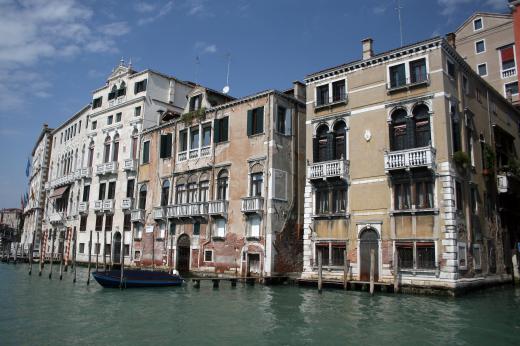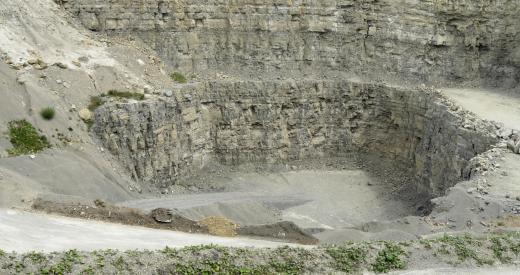Every country has its claim to fame, and Croatia is a country famous worldwide for its unique geography. A significant part of Croatia's landscape is composed of limestone, a sedimentary rock that is largely comprised of calcium carbonate (calcite). Croatian limestone is also known as karst, a term used to characterize the barren landscape plateaus of the country. The most famous karst landscape, defined by dry fractured plains of Croatian limestone, is the Dinaric Karst. The Dinaric Karst is an extensive landscape formation that occupies a broad zone measuring 100 kilometers along the Northeast coast of the Adriatic Sea.
Croatia has three main regions lining the rocky coastline in this zone: Istria, Dalmatia, and the Northern Seacoast. The Croatian limestone found along this zone is considered the classical karst, belonging to the Cretaceous and Jurassic periods, with an average thicknesses of 1.24 to 1.86 miles (2-3 kilometers) thick and .6 to 1.24 miles (1-2 kilometers) thick, respectively.

As a sedimentary rock, limestone is formed over an extensively long period of time through the layering of sediment. Through heat and pressure, loose bits of silt, minerals, and shells, among other things, are compressed into a singular conglomerate. The primary source of calcium carbonate in Croatian limestone is the shells of marine organisms. Pure limestone appears to be a white or an off-white color. The rock is easy to cut and carve, making it ideal material for elaborate carvings. However, Croatian limestone is also heavy to harvest and thus considered an expensive market commodity.

In generic usage, limestone is found as catalyst material in industrial work, used to increase the rate of hardening in mortar, plaster, and cement. Often, the solid base of roads contain limestone as an aggregate. Toothpaste and glass may have limestone sediment in them, and limestone is also used in gardening to neutralize overly acidic soil.
The extensive karst landscapes of Croatia is unique to the country, simply for the sheer size of the formations. The landscape has created unique environments for a variety of flora and geological formations such as rivers, waterfalls and underground caves and caverns. While limestone is durable and heavy, it it also porous, making their landscape formations among the best petroleum reservoirs in the world.

Croatian limestone has lent its properties to architectural inspiration as well. Limestone from Croatia has been a major part of many Croatian and European structures for millennia. Early Roman quarries have been found lining the coast and areas like Istria and the island of Brac have provided tons of limestone to projects around the world in the past, and continue to do so today.
A type of Croatian limestone called "Istrian Stone" or Kirmenjak was exported to Italy to literally build the foundations of the city of Venice. This hard limestone is often mistaken for marble. Kirmenjak is particularly water resistant, making it perfect for the base of a city under water. The same hard limestone is used to pave the famous streets of Dubrovnik on the Dalmatia Coast. The White House in Washington, D.C. also drew upon a type of Croatian limestone to help build its white columns. However, because limestone is partially soluble in acid, likened buildings that contain limestone and found in heavily polluted cities are susceptible to damage if acid rain forms there.
